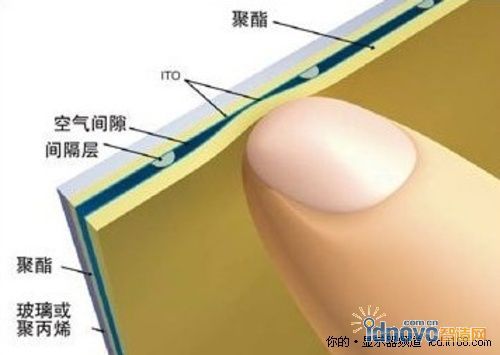The working principles of touch screens
Capacitive touch screen adopts a glass structure in which transparent conductive materials are installed. Low voltage is around the screen, creating a low-voltage AC field. When a customer touches the screen, the currency from the electrodes at four sides will flow to the touch point and create a voltage difference. The currency's strength is directly proportional to the distance from the finger to the electrode. The controller behind the screen will accurately calculate the position of the touch point (X,Y) according to the proportion of the current and its strength and report the result to the computer.
Application of touch screens
Yili capacitive touch screens are the first choice for many industries. It can be used for public information inquiry, electronic games, POS system, investment Kiosk, ATM and factory automatic control system.
Characteristics of touch screens
Accurate positioning: linear <1.5% (<1.0% for special need); controller responds rapidly.
FPC technology: Low resistance and pliability for FPC
Durability: Excellent seal technology is adopted to prevent the intrusion of grease, dust, water and chemical matters. Its life span could reach 225 million times. Light transmission and responsiveness of touch screens
As transparent films are used, the touch screen yields little reflection but good light transmission. The screen is sensitive and can respond to slight touch.
Main specifications of touch screens
Varying standard sizes: From 6.5"to 22".
Compatibility: Completely compatible with Microtouch controllers
Specifications:
Electric circuit:5V DC,35mA Transmission mode:Conductive metal pen or finger Light
transmission rate: >90%Hitting times: >225 million
timesTouch point vibrating time: <3ms Operating temperature: -15 C ~+70 C
Linear:1.5% (or <1.0% for special need)Storage emperature:-50 C ~+85 C
Surface hardness: 6H Type of glass: Common glass, toughened glass

| 